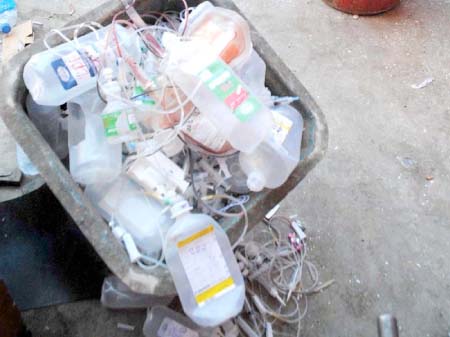
It is not clear as to what extent does our health facilities appraise the danger of health care waste; but at least to the general public I can say with conviction, that hardly do they know that health care waste is a threat to the physical, mental and social wellbeing of the people.
At this level, I want to humbly put it to the reader, that this article is not a research work in its whole. Nor is it the result of simple imagination! It is a scientific approach, the result of years of experience, interaction and observation of health care seekers and hospital clients.
By virtue of its constituents, health care waste could be toxic, infectious, hazardous and even lethal, if improperly handled. And most patients see the hospital as a place of curing illnesses only. Undoubtedly, this is purely part of the objectives of all health care institutions and personnel. Only that our services and procedures generate Waste and we cannot avoid it.
But we can manage it properly to ward off or at least minimize any threat to the health of the people we give services.
Let us be concrete here. Improper health care waste management results in infectious diseases such as Hepatitis A, B and HIV to name but a few. W.H.O estimated that injections with contaminated syringes caused 21 million Hepatitis B virus (HBV) infections. This figure accounts for 32% of all new infections. 260,000 HIV infections in the year 2000 represent 5% of infection arising from health care waste. This category is mainly the waste that emanate from Inpatient wards, Emergency units, Theatre and Labs.
Even now there is more to this! There are waste materials arising from X-ray rooms, Pharmaceutical stores, Dressing rooms etc. Imagine a pregnant woman coming into contact with radioactive wastes e.g unused liquids from radiotherapy, contaminated glassware, absorbent papers etc. Wastes from radioactive materials could cause congenital disorders, and malfunction of vital organs.
And I reiterate, our patients and clients do not grasp these issues. How many of them wander about the hospital premises as they go to the Labs, Radiology, or Theatres with their feet exposed? And some of these are escorts only. In some health care facilities the number of escorts is just too many! And these Escorts can go anywhere, get in contact with wastes and come back to the wards without any control. Do patients really need more than one escort at a time? I think is high time our health policies started capturing the number of escorts that can be allowed.
The first and foremost to any health care waste management strategy is Segregation or separation. At the point of generation the waste is sorted and segregated. The storage mediums should be protected from scavengers until the waste is disposed of safely.
If these wastes are not properly managed and disposed of safely, our health services could be seriously impaired and overwhelmed as infections continue to progress. To promote health and avoid health problems associated with health care waste, we need to establish an active and vibrant waste management teams that are equipped in knowledge, skills, equipment of health care waste management.
Lastly, the people need to know that the hospitals are not free from infections, injuries and other You can get sick by going to the hospital. You can pick infection from the hospital. Your patient can return with a new infection. The clinician, the patient, the clients all need to know that health care waste is a concern.
At this point I beg to paraphrase our national hymn; I say: let Knowledge guide our actions towards the common health.
Ref:
- Nakamura H. Ali M, Shirayama Y, Kuroiwa C. A symposium of international health Policy and Medical waste management research in Asian region. BioScience trends 2008; 2 (4) 13-4
By Muhammed Sowe &
Kumba S. Susso -University of The Gambia, School of Medicine and Allied health Sciences




